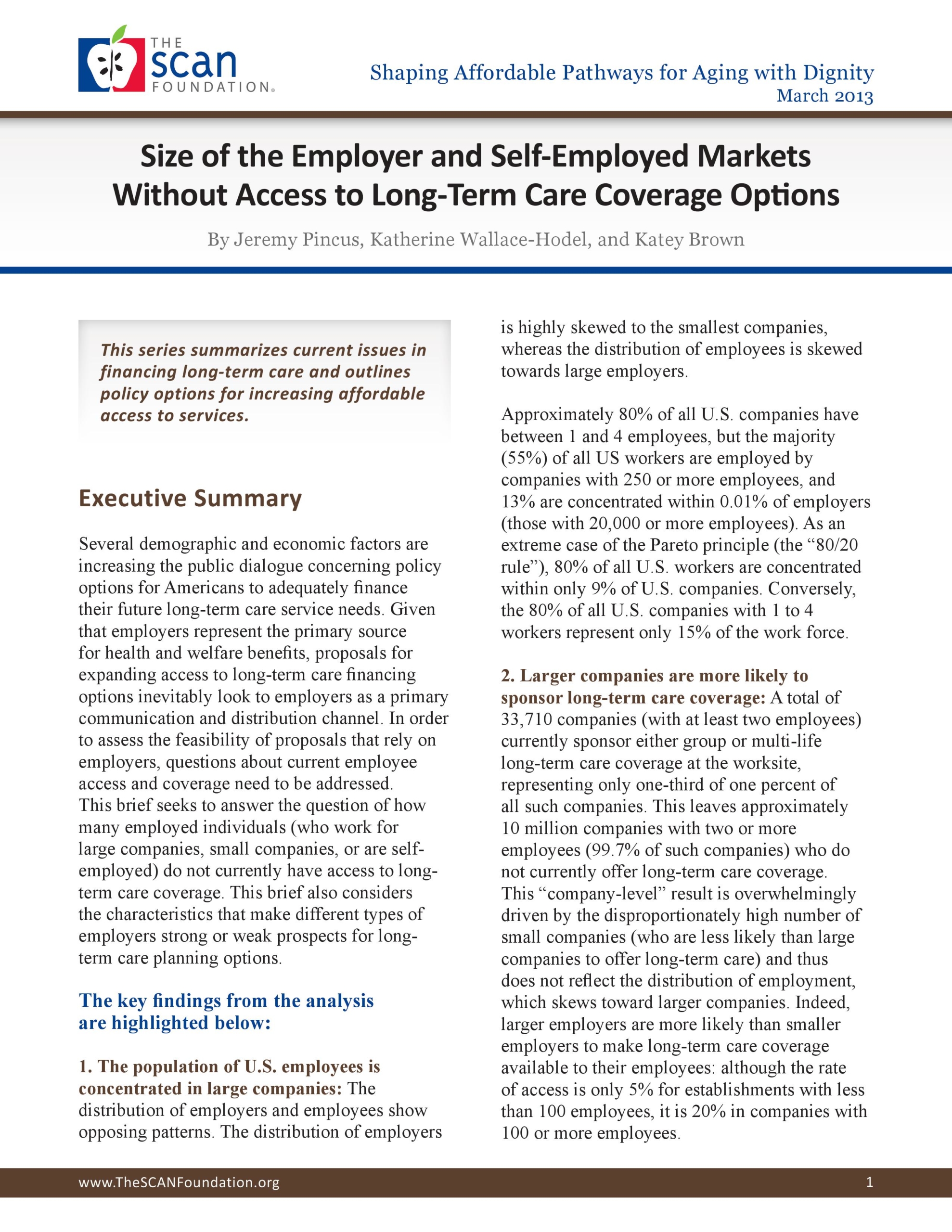Size of the Employer and Self-Employed Markets Without Access to Long-Term Care Coverage Options
summary
This brief seeks to answer the question of how many employed individuals (who work for large companies, small companies, or are self-employed) do not currently have access to long-term care coverage. This brief also considers the characteristics that make different types of employers strong or weak prospects for long-term care planning options.
Date Updated: 03/20/2013Several demographic and economic factors are increasing the public dialogue concerning policy options for Americans to adequately finance their future long-term care service needs. Given that employers represent the primary source for health and welfare benefits, proposals for expanding access to long-term care financing options inevitably look to employers as a primary communication and distribution channel. In order to assess the feasibility of proposals that rely on employers, questions about current employee access and coverage need to be addressed. This brief seeks to answer the question of how many employed individuals (who work for large companies, small companies, or are self-employed) do not currently have access to long-term care coverage. This brief also considers the characteristics that make different types of employers strong or weak prospects for long-term care planning options…
Download the publication for all visuals and complete references.
Continue Reading
This policy brief provides an introduction to The SCAN Foundation’s CLASS Technical Assistance Brief Series, which explores many of the critical issues to be considered for successfully implementing CLASS.
This policy brief describes the broad needs of individuals with disability and the wide range of supportive and environmental solutions that can allow for the most independent living possible. It suggests how findings on social and environmental supports for individuals with disability can inform implementation of CLASS.
This policy brief provides background on the historical development of benefit eligibility triggers in the private long-term care insurance market. Understanding how these triggers came into being can provide important information to those charged with implementing the CLASS Plan.


